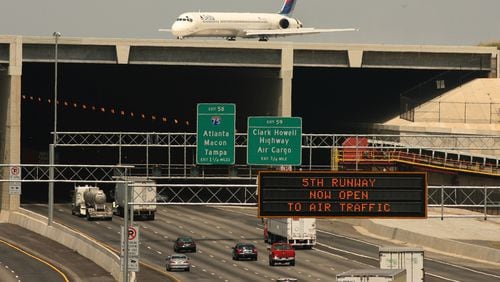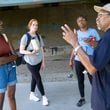Hartsfield-Jackson International Airport plans to add a navigation aid for pilots that has long been missing from its fifth runway.
Some pilots have asked why the fifth runway, the newest runway at the world's busiest airport, was completed in 2006 for $1.2 billion without Precision Approach Path Indicators (PAPI). All of Hartsfield-Jackson's other runways have PAPIs.
Credit: Kelly Yamanouchi
Credit: Kelly Yamanouchi
In the past, the FAA has said a PAPI "is not needed to support an approach and landing made under visual flight rules," noting the fifth runway was equipped with approach lights and that many airliners are equipped with advanced navigation using satellite technology.
The FAA also says PAPIs are not a requirement for the fifth runway because other runways have precision approaches.
But as a safety enhancement, Hartsfield-Jackson is striking a $645,423 agreement with the Federal Aviation Administration for the design and construction of PAPIs on the fifth runway. The airport will reimburse the FAA for the PAPIs.
A PAPI light system gives a visual cue to a pilot on whether an approach to a runway is too high or too low. It consists of four lights next to a runway. When a pilot is descending at an ideal 3 degree glide path, two white lights and two red lights will show, according to Hartsfield-Jackson. If the aircraft is too high, the pilot would see more white lights, and if it is too low, the pilot would see more red lights.
In the 2013 Asiana Airlines crash landing in San Francisco, the instrument landing system glide slope was out of service, but the PAPI was one of the indicators that would have shown the plane was not at the right glide path for a landing, according to a National Transportation Safety Board report.
While a pilot can look at cockpit instruments to gauge the glide path, “the use of the PAPI is simply a safety enhancement and another tool for a pilot to use in conducting a safe landing,” according to Hartsfield-Jackson.
About the Author








